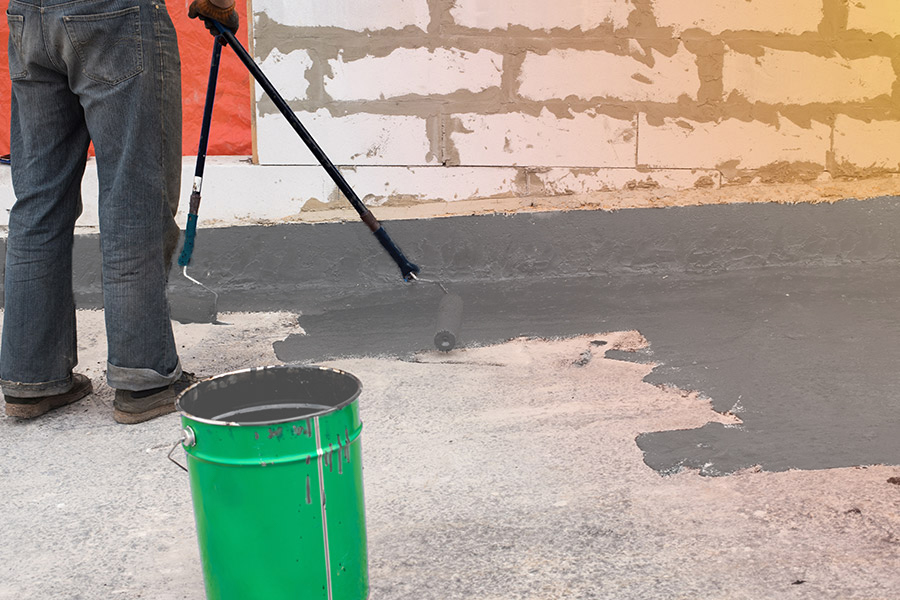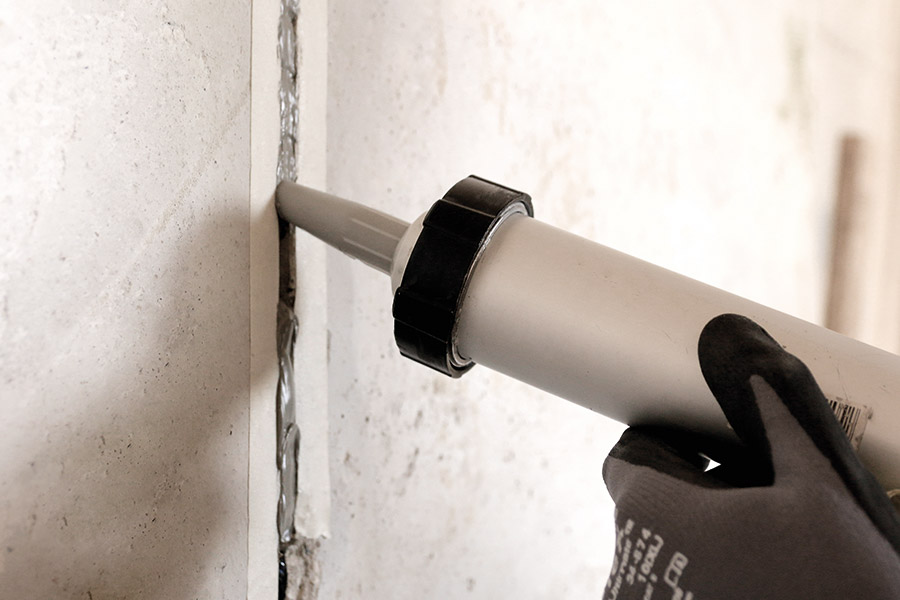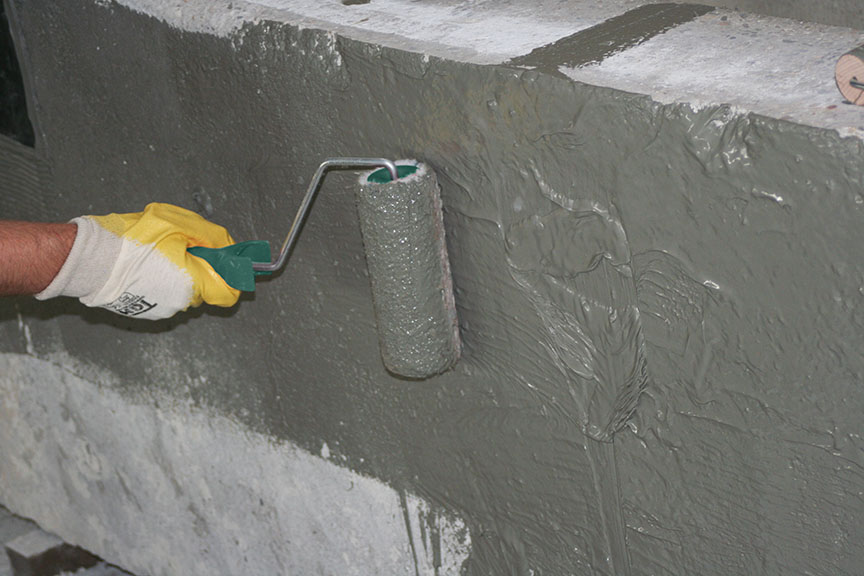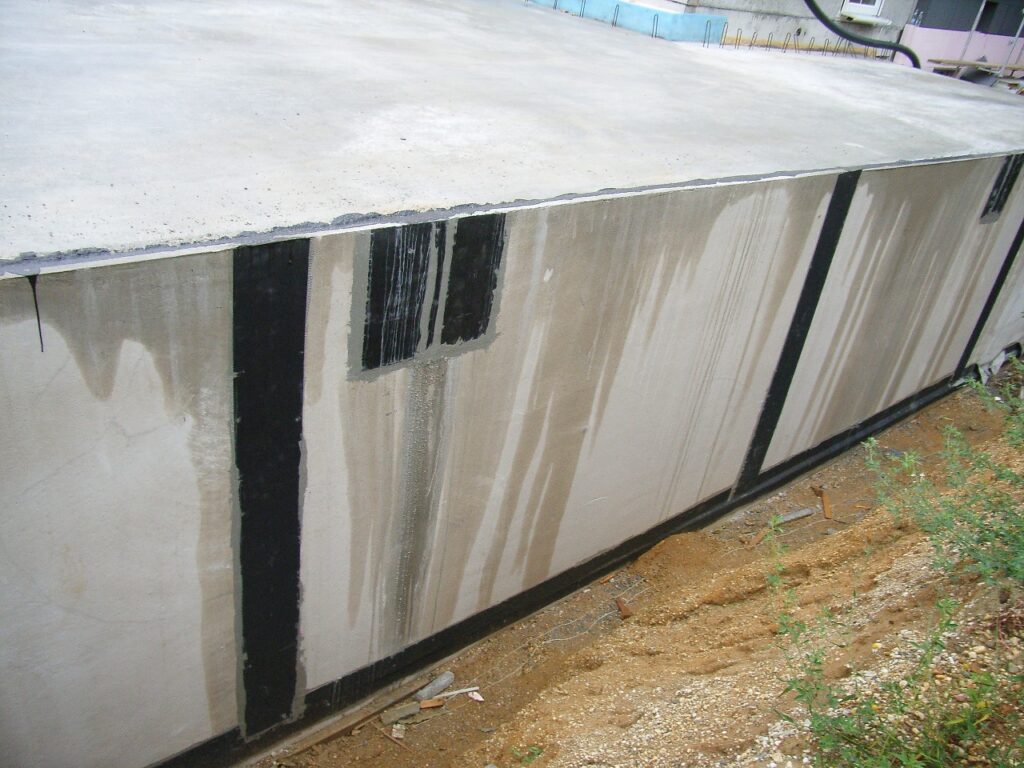Reliable cellar sealing for new construction and renovation
BT innovation products against water damage
BT innovation offers reliable cellar sealing products that keep moisture out of the cellar without attacking the masonry. Building materials such as mortar, concrete and bricks become porous after a few years, absorbing the moisture present in the soil and allowing it to penetrate into the cellar. This favours not only a wet basement, but also mould growth inside the cellar. Elast products from BT innovation can provide reliable sealing against groundwater and moisture. They permanently resist the penetration of water under pressure and thus protect cellars effectively and environmentally friendly.
BT sealing products are excellent for this purpose:
- To seal small and large cellar areas (cellar walls and floors) impermeable to water,
- to close joints and cracks subsequently and permanently and
- Combining the sealing of joints and surfaces in a few simple steps
Thus, the cellar sealing from the inside and outside, absolutely safe and fast to realize.

BT solutions for your dry cellar
InnoElast® – Effective sealing and filling of joints
When building a cellar, connection and expansion joints occur between the materials. These can be effectively closed with InnoElast®. This prevents moisture from entering the cellar. Even when applied to windows and doors – the InnoElast® system is absolutely reliable and can be used by anyone. The sealant has an extremely high adhesion and can therefore be used on almost all substrates indoors and outdoors. Due to its special composition, InnoElast® is a low-shrinkage, permanently elastic and weather-resistant sealant.
Advantages of InnoElast® Type 1
- Solvent-free
- low-shrinkage
- Applicable on damp substrates from -3°C
- Weather and UV resistant
- Permanently elastic
- Up to 25% motion absorption
- Applicable without primer
Advantages of InnoElast® Type 2
- Solvent-free and low shrinkage
- Applicable on damp substrates from -3°C
- Weather and UV resistant, high resistance to chemicals
- Permanently elastic
- Up to 10% motion absorption
- Applicable without primer
- Pressure waterproof up to 0,48 bar

Application:
InnoElast® is applied to a clean substrate, which must be free of dust, grease and oil. InnoElast® is filled on this by means of a tubular bag gun and then cures effectively. Curing is 2-3 mm per 24 h, at a room temperature of 23°C and humidity of 50%. The skin formation time is 2-3 hours for InnoElast® Type 1 and 15 minutes for InnoElast® Type 2 under the same conditions.
Instructions - Processing as a joint sealant
More product suggestions for your cellar
LiquidElast® – Your professional for sealing cellar walls (Type S+V) and cellar floors (Type S,V + P)
Effective sealing is the quick and inexpensive solution against moisture. LiquidElast® from BT innovation is a universally applicable, pressurized waterproofing system that reliably seals building materials. By simple application, LiquidElast® (type S+V) hardens after surface application to form a soft elastic rubber-like membrane that effectively protects the substrate from penetrating moisture. LiquidElast® can also be used to seal joints. Through-curing of surface coatings takes place within 24 hours at room temperature, final strength after a few days.

LiquidElast® – Advantages
- Pressure waterproof up to 1,0 bar
- Wear resistant and resistant to many chemicals
- Applicable on damp substrates from 0°C
- Crack-bridging up to 5 mm
- Permanently elastic
Instructions - Processing as surface sealing
The two-component solution for retrofit exterior sealing
ProElast® for permanent sealing of joints and gaps
If there is moisture inside the cellar rooms, there is a risk of mold growth and action must be taken quickly. In the case of exposed masonry, subsequent exterior sealing of joints and butt joints can be carried out using BT innovation’s ProElast® system. Consisting of resistant EPDM film and the extremely adhesive InnoElast® surface adhesive, it provides a durable and extremely strong bond. The ProElast® system is characterized by its very high waterproofing, high weather resistance and simple processing.
ProElast® System – Advantages
- Fast and simple processing
- Can be applied to damp substrates
- High adhesion to various building materials (including concrete, steel, glass, wood)
- Tested pressure watertight, weather and UV resistant

Application:
After applying InnoElast® adhesive to a clean substrate, it is spread by means of a notched trowel. The sealing film is then glued centrally over the joint so that no air bubbles remain. The edges are then sealed with InnoElast® Type 1 or Type 2. Short curing times enable fast further work. The skin formation time is 2-3 hours for InnoElast® Type 1 and 15 minutes for InnoElast® Type 2 at a room temperature of 23°C and a humidity of 50%. Within 24 hours, a layer thickness of 2 to 3 mm, at a room temperature of 23°C and humidity of 50%, cures effectively. In this way, you reliably seal construction joints, predetermined crack cross-sections and movement joints.
Instructions - Processing as surface sealing
With systems from B.T. innovation the cellar is safely sealed
With the novel sealing systems from B.T. innovation, the cellar of a house can be sealed easily and reliably. For example, ProElast® can be used in house and apartment construction to subsequently seal joints from the outside with a film in strip form.
- Safety up to 2 bar water pressure
- environmentally friendly
- easy processing (2-components)
- Durability, as virtually non-shrinking
The product LiquidElast® (Type S + V) can be used to reliably seal the exterior cellar area. The flat sealing system, which forms a waterproof membrane simply by spreading or pouring, can be used simply and easily wherever a structure is to be sealed against water under pressure. Even cracks of up to 5 mm can be bridged by LiquidElast® (Type S+V).
- very easy processing (painting or casting)
- environmentally friendly, since bitumen-free
- permanent sealing (crack-bridging up to 5 mm)
- Tested sealing up to 1,0 bar water pressure
- versatile use (grouting, painting)
With SynkoElast® sealing tape, the concreting and sealing processes merge into a single operation. The sealing tape is inserted directly from the roll halfway into the freshly poured concrete. This makes execution in accordance with the WU concrete guideline child’s play and simplifies sealing of the construction joints created in the cast-in-place concrete, even with complexly routed reinforcement.
- easy laying into the fresh concrete
- More cost-effective than conventional sealings
- tested safety up to 2 bar water pressure
For careful sealing of concrete by a professional, he must also analyze the possible risk of water penetration. Experts distinguish, for example, between general soil moisture, non-accumulating or accumulating seepage water, or pressurized water as in flooding. The decisive factor is the floor boundary under the cellar floor. If the groundwater rises to a maximum of 30 centimeters below, it is accumulating seepage water.
However, if the water level rises significantly above this limit, it is pressing moisture – and this requires the highest standards of cellar sealing. The most common and also the safest are concrete floors and walls. Especially, a cellar made of water-impermeable WU concrete withstands all water loads. Further sealing measures are rarely necessary.
When choosing a concrete cellar, you can choose one of two types. This can be a white tank on the one hand or a black tank on the other. The only difference is the type of concrete used and the resulting different sealing required.
In the white tank is used WU concrete and laid in the cellar as a kind of tank. Here, the four or more walls and the floor form a closed tank of concrete. This leaves no open spaces or joints for water to enter. This type of seal is used for water under pressure.
For further protection, specialists lay strips of plastic or metal in the white tank to stabilize critical areas in particular, or to limit crack widths.
If no WU concrete is used and there is no threat of pressurized water, it is referred to as a black tank. Often a bitumen coating is chosen, or plastic films made of polyethylene. The color of these sealings is often black – that is why the term black tank – but lighter shades are also used.
In the case of existing cellars made of other materials such as sandstone or brick, the sealing must be integrated subsequently. This sometimes requires major remodeling work, depending on the condition of your cellar. Often, the cellar wall must first be exposed and cleaned in order to seal it afterwards. This can be done with a subsequently installed white tank as well as, for example, with welded sheeting made of bitumen or other sealants.
Especially in older buildings, cellars often have cracks. This problem must also be eliminated first before reliable sealing protection can be installed. This involves filling the cracks or brittle joints in the conventional way using a special resin so that moisture can no longer penetrate the masonry. After that, the actual sealing layer can be put on. (sealing concrete cracks)
For most sealing measures, you should definitely call in a professional to advise you and carry out the work. This is the only way to guarantee that the right cellar seal is chosen and that all necessary measures are taken to protect your cellar effectively and in the long term against damage caused by moisture and water penetration. Thus, damp cellars have no chance and you ultimately preserve the value of your building.